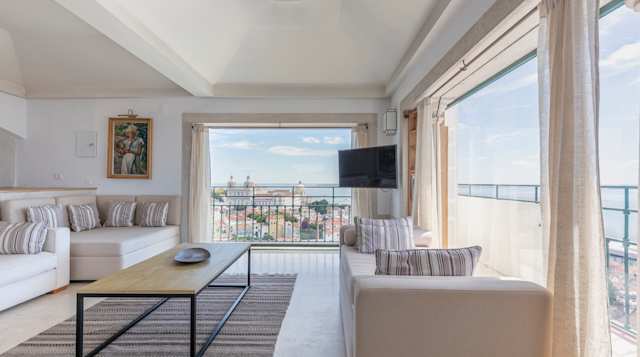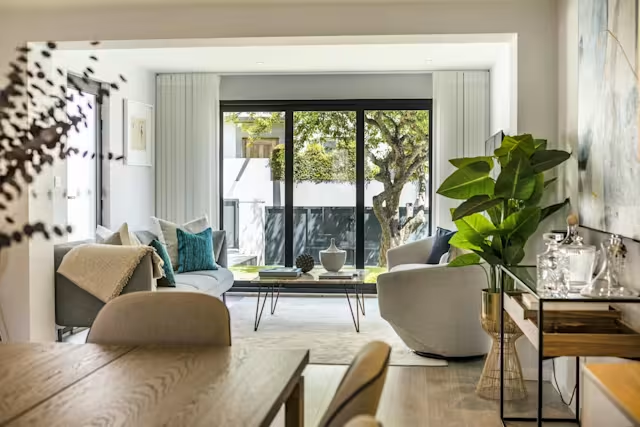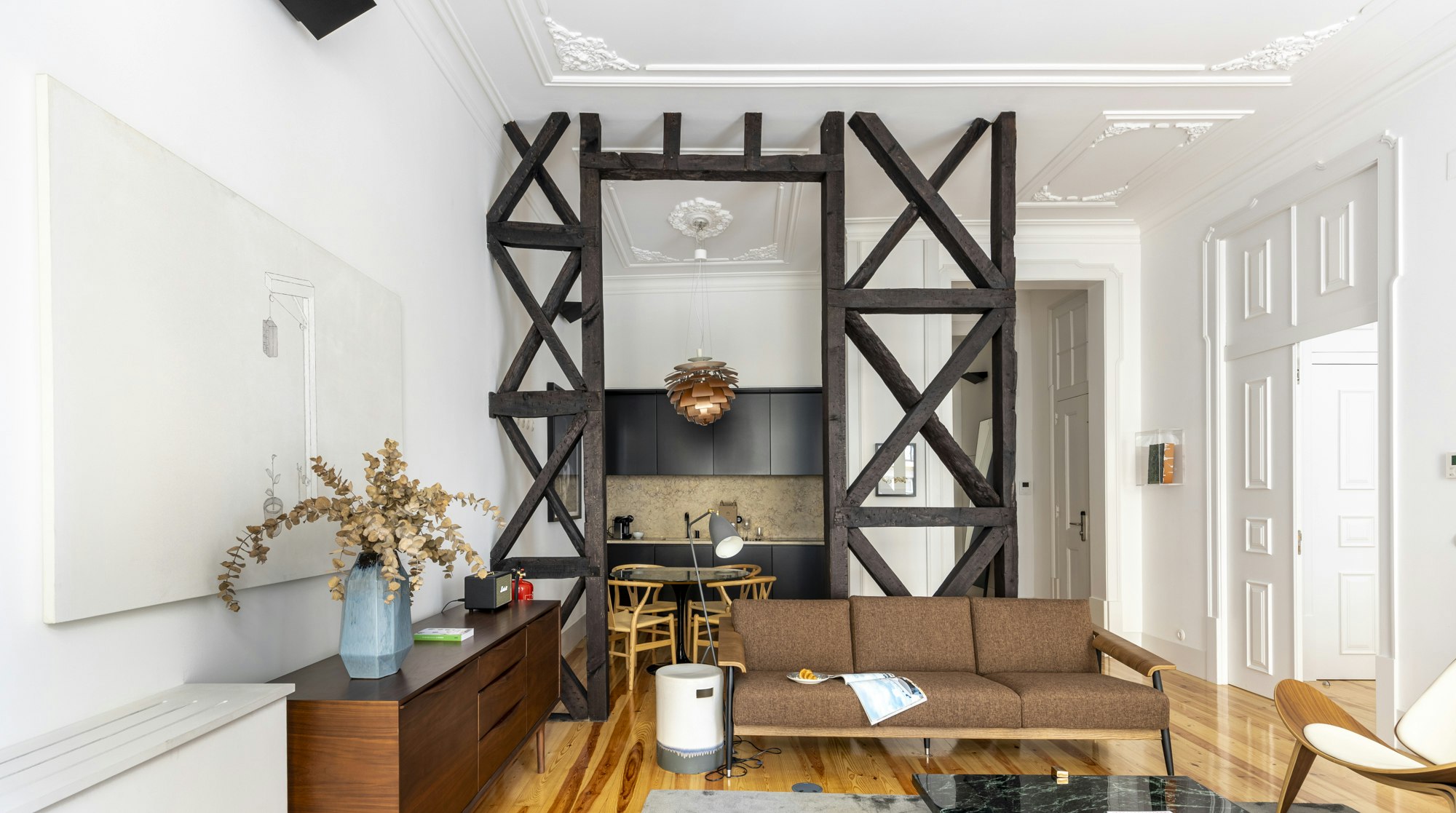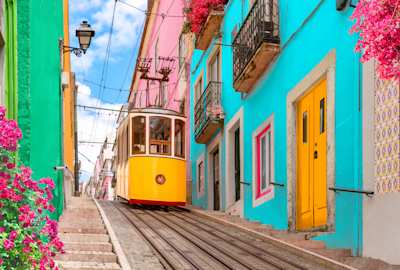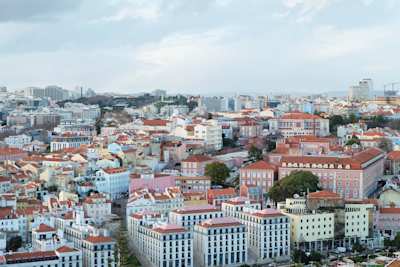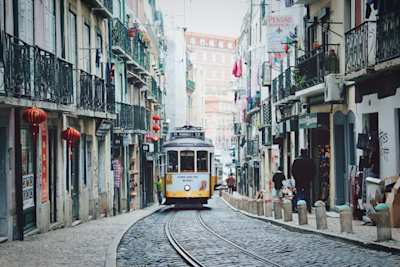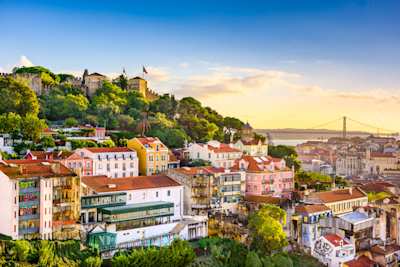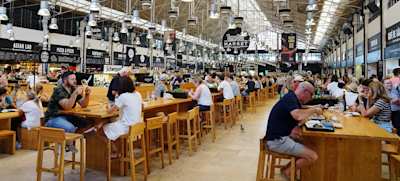A Roundup of the Safest Places to Stay in Lisbon
Planning a trip to the Portuguese capital? Here are some of the best places to stay.
~
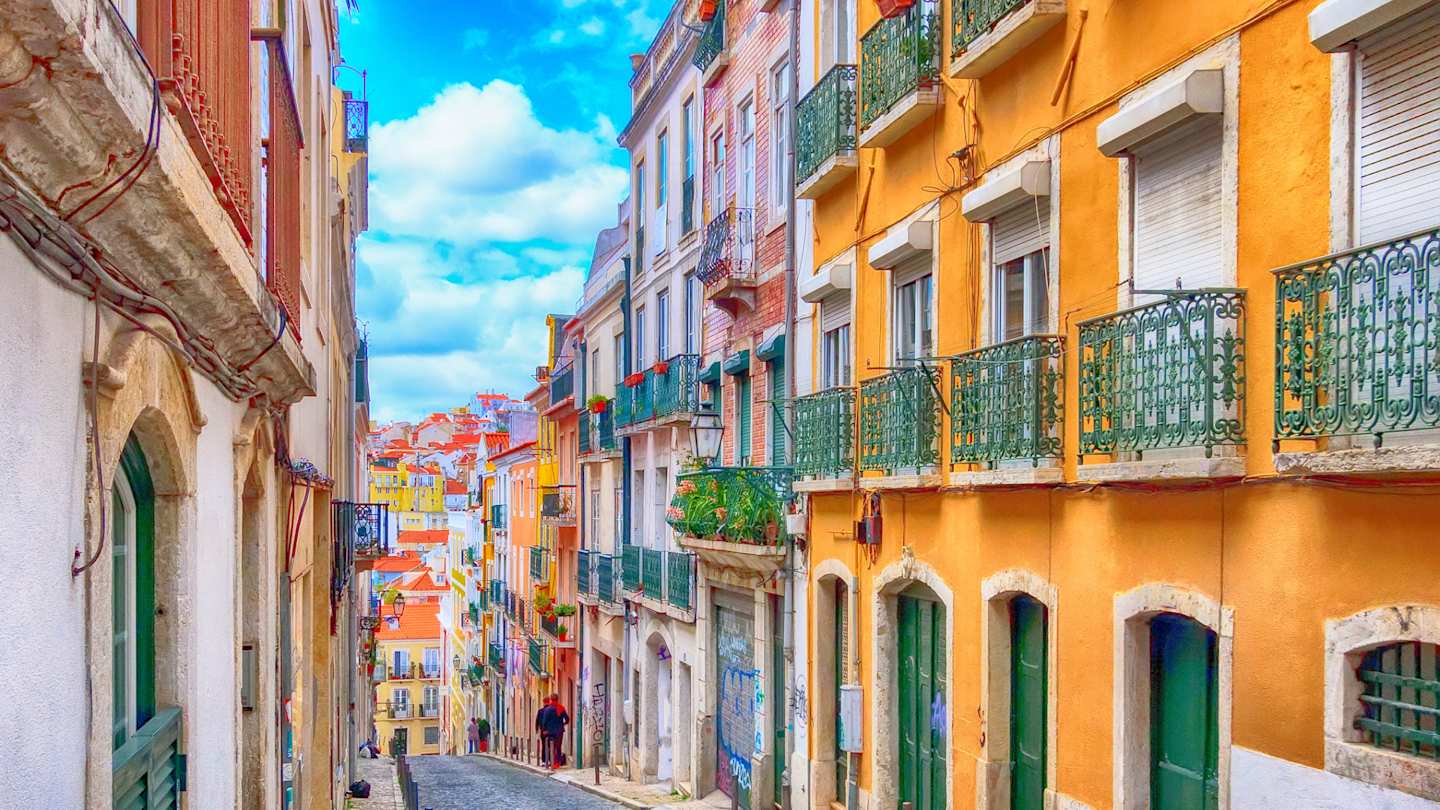
With cork handbags, cork clothes and all manner of other cork souvenirs, even if you fell over, you’d probably bounce back up. In all seriousness, Lisbon is a remarkably safe city. Like all cities, it has its pickpockets and people looking to take advantage of tourists. But, for the most part, its affluent and exclusive neighbourhoods don’t really need any police presence. You’re in more danger of getting a tummy ache from the yummy pastries than getting into some kind of criminal mischief. Lisbon may share a language with the favelas of Rio de Janeiro (that’d be Portuguese), but culturally, they’re a world apart. Portugal was even held up as a beacon of security in documentary maker Michael Moore’s Where To Invade Next, which implied the US could learn from its policies to make its own nation a little safer.
At Plum Guide we have done some serious research, so buckle up (to be even safer), as we take you on a journey through the safest places to stay in Lisbon.
Lapa
Lap up the Lapa lifestyle in Lisbon's lovely, lively and luxurious locality. Lapa is everything that makes Lisbon special, from undulating terrain crisscrossed by old-world trams to its quaint church and green gardens. And it's one of the safest parts of central Lisbon, where old-world mansions sit on tree-studded streets. If anything did go wrong, you even have the Centre of Health of Lapa right in its heart. Make sure to swing by the beautiful Basilica of Estrela before enjoying a quiet afternoon in its gardens. Don't worry – you're not too far removed from the centre here, either. You can easily stroll down to the famous Pink Street or Praça do Comércio. Just pack comfortable shoes, as Lisbon is known for its hills.
Chiado

View of Chiado shopping area at sunset, crowded with tourists and locals, Lisbon, Portugal
Propping up the city centre is Chiado, a maze of shopping avenues, wide and narrow, flat and steep. All the aforementioned cork in the world seems to adorn the shelves of its shops, which also display all manner of upmarket fashionwear and deluxe accessories. Grab a coffee on the terrace of one of the many boutique cafés and watch people go by. Despite being the city centre, it’s clean as a whistle and one of the safest places to stay in Lisbon. You’re only in danger of being charmed by the local music in the Fado in Chiado Theatre.
Bairro Alto
Some people think Bairro Alto and Chiado are the same area. Never talk to those people. The former runs along the western flank of the latter. And if that’s not a confusing sentence, then we don’t know what is. Perhaps it’s better to look at how Lisbon’s two most centrally-situated spots differ. Bairro Alto is quaint, old-world and hilly, but really comes alive in the evening through its little bars and restaurants. It’s a perfect spot to rest weary legs and unwind with some of the nation’s Licor Beirão after shopping in Chiado in the afternoon.
Downtown

Rossio Square with wavy cobblestone pattern, fountain and monument of Pedro IV in Lisbon, Portugal
A little east of Bairro Alto and Chiado is the downtown area, sometimes referred to as Baixa. This neighbourhood is known for its Rossio Square (officially called the King Pedro IV Plaza, but that’s a bit of a mouthful). Anyway, the monarch stands atop a huge podium (compensating for something), lording it over the coffee drinkers at the art-deco Café Nicola. With the former monarch watching over you, this is one of the safest places to stay in Lisbon. You'll also find two Baroque-style fountains here and its famous wavy cobblestones beneath your feet. The best part about being in this neighbourhood is the easy access to pretty much all of Lisbon. Not only are many of the major landmarks within strolling distance, but fantastic transport links can whisk you away across the city, be it on buses, trams, or the metro.
Alfama
Keep moving east to stay in a Plum home amid the steep alleys and red roofs of traditional Alfama. Chat with the locals in the quaint little shops selling all kinds of handicrafts. The iconic no. 28 tram meanders its way around the sloped passages, culminating in the 11th-century São Jorge Castle. In the evening, you’ll feel as safe as can be, listening to the sweet, sweet sound of live fado in the old-world restaurants.
Avenida da Liberdade
A lot of the big hotels line Avenida da Liberdade, which runs through the city centre. The design emulates Paris' iconic boulevards – think luxury fashion houses, cobblestone sidewalks, and traditional kiosks where locals grab an alfresco bite. But this neighbourhood isn't just for fashionistas. It ends in the north at Eduardo VII Park, Lisbon's largest green space, where you can enjoy a picnic (or a jog, if you're feeling sporty). Film buffs can catch a movie at Cinema de São Jorge or tour Cinemateca Portuguesa, Lisbon’s Museum of Cinema. Over the years, they’ve liberally added sections to this six-lane road. So, while your possessions and health are safe in this part of Lisbon, do make sure to look before crossing the street.
Belém
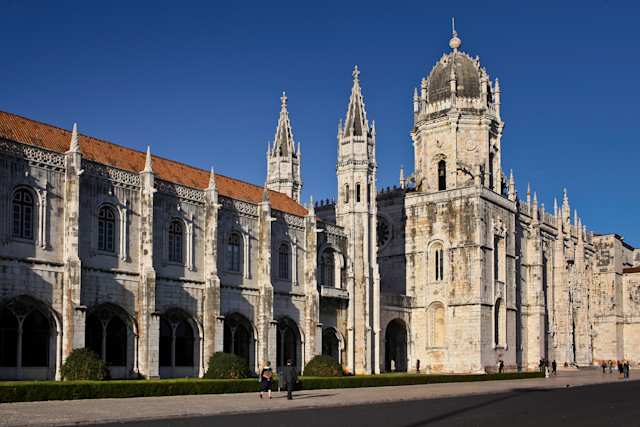
Jerónimos Monastery, Belem, Lisbon
At the western end of the city centre of Lisbon lies Belém, famous for its namesake tower and the Jerónimos Monastery. Although you'll need to hop on a bus or train to visit the centre, this neighbourhood is packed with attractions, bringing a lot of attention to the area. And yet, like most of Lisbon, it remains as safe and secure as its fortified tower, making it a great family destination. Your biggest worry is making sure the kids don’t fall off the tower into the River Tagus. Best to keep them by your side, eh?



